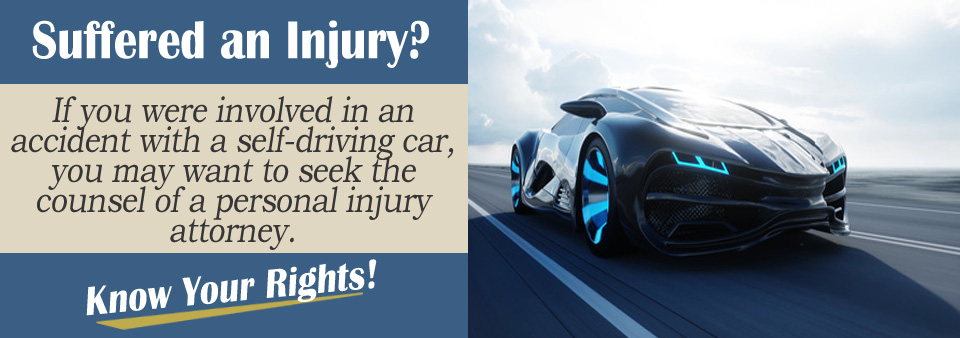Auto accidents happen, including those involving self-driving cars. According to the California Department of Motor Vehicles, self-driving car accidents in the state of California almost doubled from 2016 to 2017.
A professor who specializes in self-driving technology said that self-driving car makers and cities need to work together to create road that will accommodate self-driving cars and reduce the risks of accidents.
The technology designed for the vehicles, such as laser vision, GPS, computer vision, sensors, and odometry, was created to “see” or sense the vehicle’s surroundings, but just one miscommunication or malfunction could lead to a crash.
Filing the Accident Report
As with any other accident, you will need to file an accident report. You can file an accident report against a self-driving car by contacting local police. You will need to make sure you tell them exactly what happened.
If possible, take photos of the accident scene and the damage to the vehicles. Be sure to document everything that you can about the accident. If there are any witnesses, make sure you get statements from them along with their contact information and names.
The accident could have been caused by a vehicle illegally changing lanes or failing to stop in a timely fashion. The police officer will investigate the accident and make sure that the accident is accurately described. The police report is essential to the accident claim and for dealing with the auto insurance carrier.
Considering Your Damages
A variety of damages might result from an accident with a self-driving vehicle. Common damages include property damages, medical expenses, pain and suffering, future medical expenses, lost wages, future loss of earnings, permanent scarring and disfigurement, long-term disabilities, and more.
Your attorney will help you determine which losses you suffered. Negligence plays an important role in an accident claim. You must prove that the other driver or vehicle acted in a negligent manner and that resulted in the accident that caused your damages and injuries.

Proving Negligence Contributed
Negligence is composed of four different elements. The four elements of negligence are duty, breach, causation, and damages. A driver has a duty to act safely and predictably so others are not at risk. If a driver fails to act in that manner, the duty is breached.
As an example, if a driver breaks a traffic regulation, such as running a stop sign, then the duty has been breached. The causation is that the breach of duty caused the accident. Then last, but not least, you prove that the damages resulted from the crash.
For example, you wouldn’t have broken your arm if the self-driving car hadn’t T-boned you.
Contact a Personal Injury Attorney
If you have been in an accident with a self-driving vehicle, you should consult with a personal injury attorney. An attorney will help you get your claim on track. Complete the Free Case Evaluation Form on this page so you can get your claim on track.